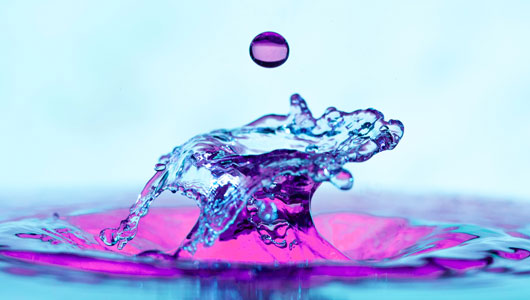
What Is Squirt?
If you've never personally experienced or witnessed a squirting orgasm, you might think that female ejaculation is a myth perpetuated by porn movie magic. But not only is squirting real, it's more common than you might think.
Come along as I explore the ins and outs of what squirting is, how it's different from female ejaculation, why it's such a hot topic of debate, and much more essential information about squirting.
What Is Squirting?
To say that there's some debate about what squirt actually is would be an understatement. Sex educators, medical professionals, and the general public have gone back and forth about the true definition of female ejaculation for decades, and there still isn't one unanimously agreed upon answer.
That said, there are a few things we do know. Firstly, squirting involves the release of fluid during orgasm or sexual arousal. This expulsion of fluid is typically clear, watery, odorless, and comes out quickly and in large volumes.
Secondly, we know that squirting can happen as a result of orgasm, or not. While it's more common to experience squirting with climax, some women and AFAB people can squirt from the right kind of sexual stimulation, regardless of orgasm.
So, we know that squirting happens as a result of orgasm or intense arousal, but the question remains: what is squirt? And is it the same as female ejaculation? Let's dig deeper into the details.
Learn more: How to Make Yourself Squirt
Is Squirt Just Urine?
Perhaps the biggest debate around the topic of squirting is whether or not it's really just pee. Some studies claim that squirting is the involuntary emission of urine during sex or orgasm, while others argue that it contains distinct elements found in semen.
Let's explore both sides of the argument, shall we?
Research supports the idea that squirt is urine
A study published in The Journal of Sexual Medicine analyzed the chemical components of squirt and concluded that it closely resembles highly diluted urine. This research clearly supports the idea that squirting may be a form of involuntary urination during sex or orgasm.
However, some folks argue that these findings are not reliable due to research limitations in sample size and methodology. Furthermore, some women and vulva-owners say that, when they experience a squirting orgasm, the fluid comes from their vagina, not their urethra. (1)

Studies show differences between squirt and urine
On the other side of the debate, some researchers claim to have discovered distinct differences between squirt and urine. One study revealed traces of something called prostate-specific antigen (also known as PSA), an enzyme also found in male seminal fluid — and more importantly — absent from urine. (2)
Some who have experienced squirting firsthand say that it smells, tastes, and looks very different from urine. While pee tends to be yellow-ish in color with a distinct smell, many report that squirt is odorless, colorless and tasteless, or has an odor and taste that's completely different from urine.
If there's one thing everyone agrees on, it's that squirting experiences can greatly vary, and more research is needed to make a definite conclusion about its exact composition.
The role of Skene's glands
Another factor to consider in the debate about squirting is the role of the Skene's glands, also known as the female prostate.
The Skene's glands are located near the urethra and produce a fluid similar in composition to male prostate fluid. Some researchers believe that stimulation of these glands during sexual arousal can result in squirting or female ejaculation.
Now you might be thinking: "What do you mean squirting or female ejaculation? I thought they were the same thing!"
Well, there's some debate about that too.
Squirting Vs. Female Ejaculation
If you're used to hearing the terms squirting and female ejaculation used interchangeably, you're not alone. Most people assume squirt and female ejaculation are the same thing, as they both involve the release of fluids during orgasm or sexual stimulation.
However, many studies note key distinctions between squirt and female ejaculation. Female ejaculation is typically described as a small amount of milky-white fluid that originates in the Skene's glands, while squirting is referred to as a larger volume of clear or slightly cloudy liquid that comes from the bladder. (3)
That said, it is common for women to squirt and ejaculate simultaneously, making it nearly impossible to note which is actually happening. Obviously, this contributes to the debate as to whether or not squirt and female ejaculation are really two different things.
Terms and definitions aside, let's turn our attention to the act of squirting itself, and how to make it happen in the first place.
Learn more: How Do I Know If I Had An Orgasm?

Squirting and Female Ejaculation Techniques
There isn't any one technique that's guaranteed to result in a squirting orgasm, but there are a few tried and true methods that have proven to work best. To achieve a squirting orgasm, most women and vulva-owners require stimulation to the G-spot, clitoris, or a combination of both.
The G-spot, in particular, tends to play the most pivotal role in triggering a squirting orgasm and/or female ejaculation. Stimulation of this area ignites an abundance of erectile tissue within the internal clitoral network, causing it to swell, expand, and naturally lubricate.
The G-spot can be stimulated with fingers, a penis, sex toys, or any other body-safe pleasure product that can reach it. It's typically found about 2 inches inside the vagina, on the front wall, so there is no need to penetrate deeply to reach it.
Because the G-spot is positioned on the anterior wall toward the bellybutton, using a curved sex toy or making a come hither motion with your fingers can be the best way to precisely target it. It can also be more effective to create a hook and pull motion rather than straight in-and-out penetration.
Having a hard time picturing that? Read my guide How To Make Someone Squirt for more details!
Can Every Woman Squirt?
So, can every woman and AFAB person achieve a squirting orgasm?
There isn't a black and white answer to that either (noticing a theme here?) While most medical professionals and sex educators agree that everyone with a vulva technically has the mechanics to squirt, the fact remains that not everyone will.
Recent studies show that, in response to sexual stimulation, 54% of women experience squirting, and 14% experience it almost every time they orgasm. At the very least, this proves that the elusive squirting-O isn't quite as rare as we're often led to believe. (4)
There is no concrete way to know why some people squirt and others don't. However, research suggests that both anatomical differences and psychological factors can contribute to one's ability to achieve a squirting orgasm.
For example, variations in Skene's gland size can potentially impact one's ability to squirt, though that hasn't been fully proven. What has proven to be true is that a person's mental state and level of relaxation can greatly affect their chances of squirting. The safer and more at ease someone feels, the more likely they are to squirt.
Read: Female Ejaculation & the G-Spot
Final Thoughts
Now that you've got all the facts (and assumptions!) about what squirting is, you're ready to draw your own conclusions. And while there's still quite a bit of mystery and skepticism surrounding squirt and female ejaculation, one thing we know for sure is that it's real, and a beautiful, natural part of sexuality.
Before you go, don't forget to follow Delicto on Instagram and TikTok for lots more about pleasure products, sex, and relationships.
